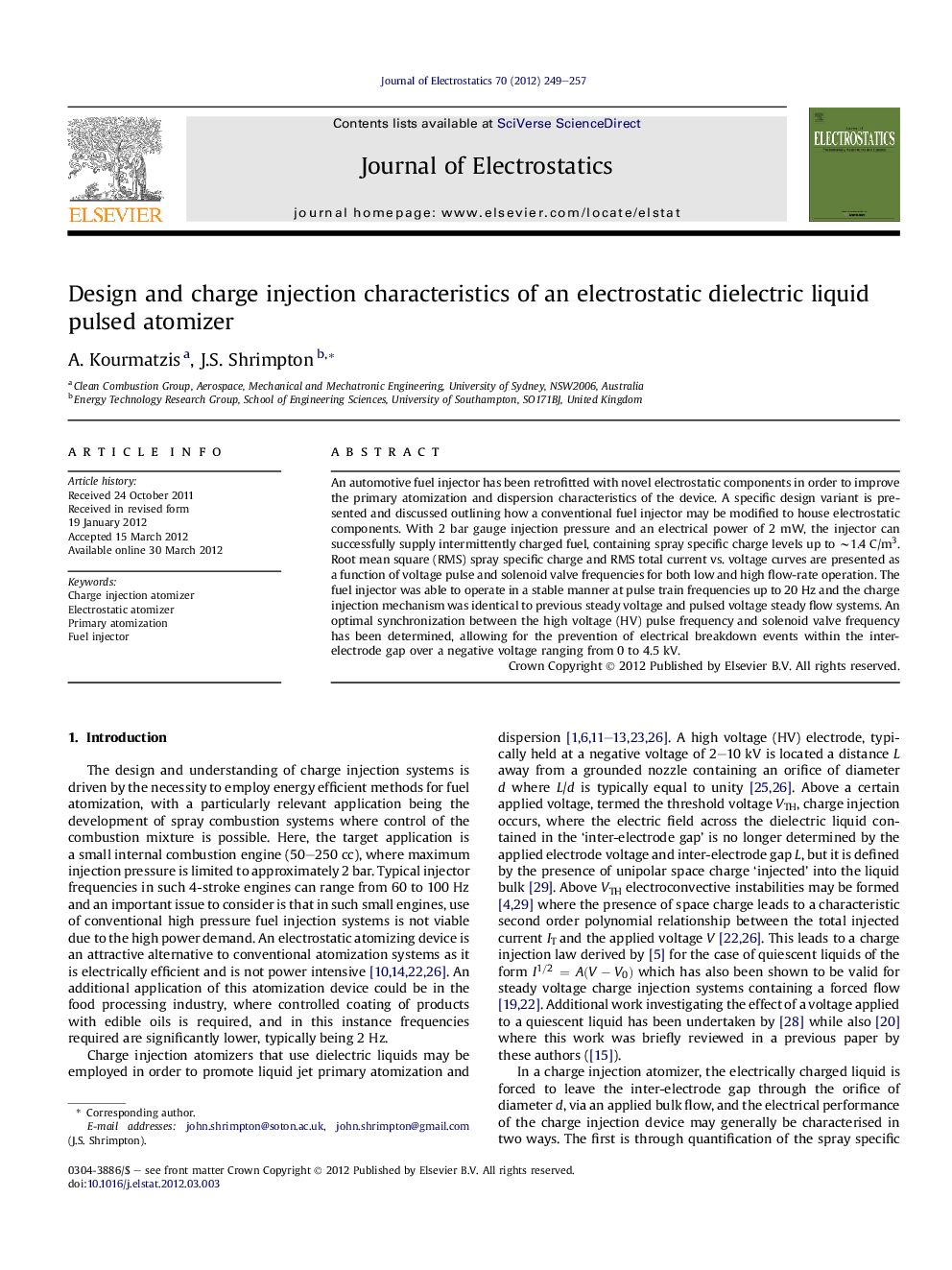| Article ID | Journal | Published Year | Pages | File Type |
|---|---|---|---|---|
| 726083 | Journal of Electrostatics | 2012 | 9 Pages |
An automotive fuel injector has been retrofitted with novel electrostatic components in order to improve the primary atomization and dispersion characteristics of the device. A specific design variant is presented and discussed outlining how a conventional fuel injector may be modified to house electrostatic components. With 2 bar gauge injection pressure and an electrical power of 2 mW, the injector can successfully supply intermittently charged fuel, containing spray specific charge levels up to ∼1.4 C/m3. Root mean square (RMS) spray specific charge and RMS total current vs. voltage curves are presented as a function of voltage pulse and solenoid valve frequencies for both low and high flow-rate operation. The fuel injector was able to operate in a stable manner at pulse train frequencies up to 20 Hz and the charge injection mechanism was identical to previous steady voltage and pulsed voltage steady flow systems. An optimal synchronization between the high voltage (HV) pulse frequency and solenoid valve frequency has been determined, allowing for the prevention of electrical breakdown events within the inter-electrode gap over a negative voltage ranging from 0 to 4.5 kV.
► Pulsed injection of hydrocarbon liquids using an adapted EHD atomizer demonstrated. ► Electrical characteristics mirror those found in steady systems. ► Proof of concept established.
